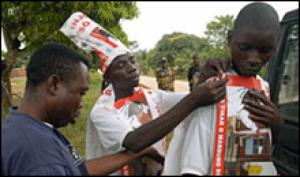Controlling the Marburg outbreak in Angola
The WHO Regional Office for Africa has been leading the international field team supporting national and local experts in Angola to control the largest ever recorded outbreak of Marburg haemorrhagic fever. Marburg fever is a rare but fatal disease caused by a virus from the same family as the Ebola virus. While the outbreak appears to be declining, potential cases continue to be investigated and vigilance remains high.
These photo essays give a glimpse into the challenges and successes in controlling this outbreak.
Bringing the Marburg outbreak under control
Responding to the Marburg outbreak
Experts from the Global Outbreak Alert and Response Network (GOARN), including experts from neighbouring countries, have been working in Uige Province – the epicentre of the outbreak. Controlling this outbreak has included implementation of strict infection control measures to stop the virus spreading in health clinics and hospitals; early identification and isolation of people with Marburg; and follow-up of the people they have been in contact with. Control efforts have also focused on training teachers and health workers.
Community awareness has been key, and the outbreak team have worked with community leaders – also known as Sobas – to help people understand what they can do to stop Marburg.
The natural source of the virus remains unknown. Investigations into the very early cases will help scientists understand how the virus infected people in Uige.



